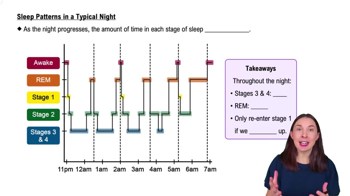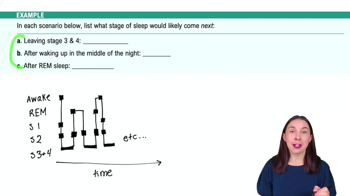Table of contents
- 1. Introduction to Psychology1h 43m
- 2. Psychology Research2h 20m
- 3. Biological Psychology2h 41m
- 4. Sensation and Perception28m
- 5. Consciousness and Sleep32m
- 6. Learning41m
- 7. Memory34m
- 8. Cognition37m
- 9. Emotion and Motivation35m
- 10. Developmental Psychology33m
- 11. Personality48m
- 12. Social Psychology41m
- 13. Stress and Health41m
- 14. Psychological Disorders44m
- 15. Treatment47m
5. Consciousness and Sleep
Sleep
Struggling with Psychology?
Join thousands of students who trust us to help them ace their exams!Watch the first videoMultiple Choice
The biologically determined and innate patterns of behavior that exist in both people and animals are called
A
stimuli.
B
motives.
C
needs.
D
instincts.
 Verified step by step guidance
Verified step by step guidance1
Begin by understanding the concept of 'instincts' in psychology. Instincts are innate, biologically determined patterns of behavior that are present in both humans and animals.
Differentiate instincts from other related concepts such as stimuli, motives, and needs. Stimuli are external factors that can trigger a response, motives are internal desires that drive behavior, and needs are essential requirements for survival and well-being.
Recognize that instincts are not learned behaviors; they are inherent and often serve a survival function, such as the instinct to eat, reproduce, or protect oneself.
Consider examples of instincts in animals, such as migration patterns in birds or the nesting behavior of turtles, to understand how these behaviors are automatic and not learned.
Reflect on human instincts, such as the fight-or-flight response, which is an automatic reaction to perceived threats, illustrating how instincts operate in both people and animals.

 3:25m
3:25mWatch next
Master Circadian Rhythms with a bite sized video explanation from Hannah Gordils
Start learningRelated Videos
Related Practice


































































































![Race, Genes and IQ Differences | Bret Weinstein [Mini Clip]](https://img.youtube.com/vi/IztL_m3pd70/mqdefault.jpg)



































































































